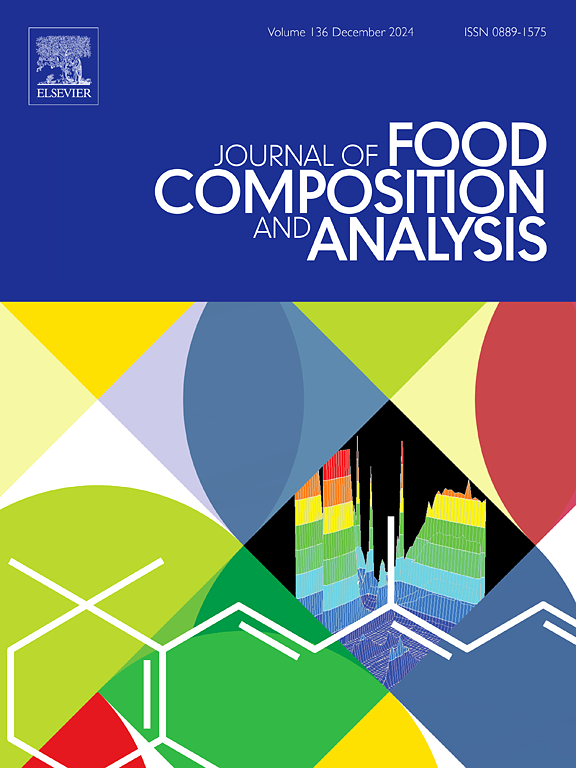Robust application of a chemometric model based on the relationships between 10 volatile compounds and sensory attributes to support the panel test in virgin olive oil quality classification in olive oil companies
IF 4
2区 农林科学
Q2 CHEMISTRY, APPLIED
引用次数: 0
Abstract
Several approaches have been proposed to support the panel test in virgin olive oil classification, but none of them is currently applied in olive oil companies. Aim of this study was the robust application of a chemometric model in a big olive oil company. The application on 244 samples of the PCA-LDA model developed in 2019, based on volatile profile by HS-SPME-GC-MS, gave unsatisfactory results, pointing out critical issues relating to the training-set, variable selection and validation. Therefore, a new t-test-FwS-LDA model was developed; it was based on a very wide dataset (approx. 1800 samples from 6 different production years) and on an algorithm for a stepwise selection of variables. The crucial role of the production year has been proven and included in the model. Ten volatile molecules were thus selected coming from both the lipoxygenase pathway and several virgin olive oil sensory defects. The new model was two-fold validated with 53 and 273 samples coming from production years belonging and not belonging to the training-set, respectively, with very satisfactory results (>90 % and 80 % correct classification, respectively). Finally, the study indicated that for routinary application of the model, year-by-year updating of training-set and variable selection is required.
求助全文
约1分钟内获得全文
求助全文
来源期刊

Journal of Food Composition and Analysis
工程技术-食品科技
CiteScore
6.20
自引率
11.60%
发文量
601
审稿时长
53 days
期刊介绍:
The Journal of Food Composition and Analysis publishes manuscripts on scientific aspects of data on the chemical composition of human foods, with particular emphasis on actual data on composition of foods; analytical methods; studies on the manipulation, storage, distribution and use of food composition data; and studies on the statistics, use and distribution of such data and data systems. The Journal''s basis is nutrient composition, with increasing emphasis on bioactive non-nutrient and anti-nutrient components. Papers must provide sufficient description of the food samples, analytical methods, quality control procedures and statistical treatments of the data to permit the end users of the food composition data to evaluate the appropriateness of such data in their projects.
The Journal does not publish papers on: microbiological compounds; sensory quality; aromatics/volatiles in food and wine; essential oils; organoleptic characteristics of food; physical properties; or clinical papers and pharmacology-related papers.
 求助内容:
求助内容: 应助结果提醒方式:
应助结果提醒方式:


